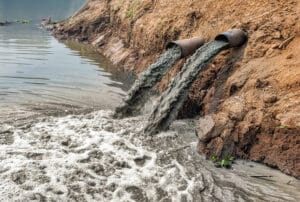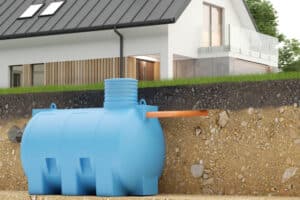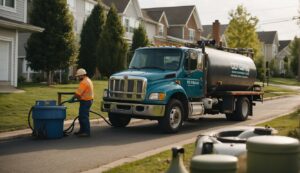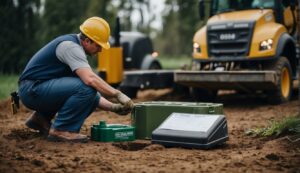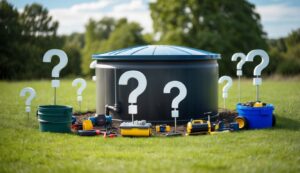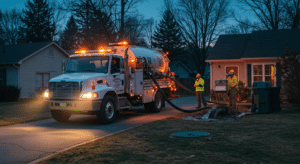Everything You Need to Know About Landscaping Around Your Septic Tank
A septic tank cover can be an unwelcome eyesore for homeowners everywhere. While they might be necessary, septic tanks are far from a welcome sight for many people, especially when they interfere with your beautiful yard and landscaping. If you’ve had your efforts thwarted in the past because of a noticeable septic tank access hatch taking up space or sticking out in your yard, you might consider landscaping options around your septic system.
While it sounds promising, there are many things to know about landscaping around your septic system before deciding what you want your yard to look like at the end of your process. Start with what plants that work in your climate, then move on to functionality, availability, and aesthetic appeal, before finally ensuring your choices follow all of the do’s and don’ts provided here.
This article will give you some new ideas for everything you need to know about your septic system and the best practices for designing around a septic tank.
Do: Keep Your Plants Close to Each Other
Keeping your plants close to each other can help mitigate erosion. Mitigating erosion around your septic system is vital to preventing any soil loss surrounding your system.
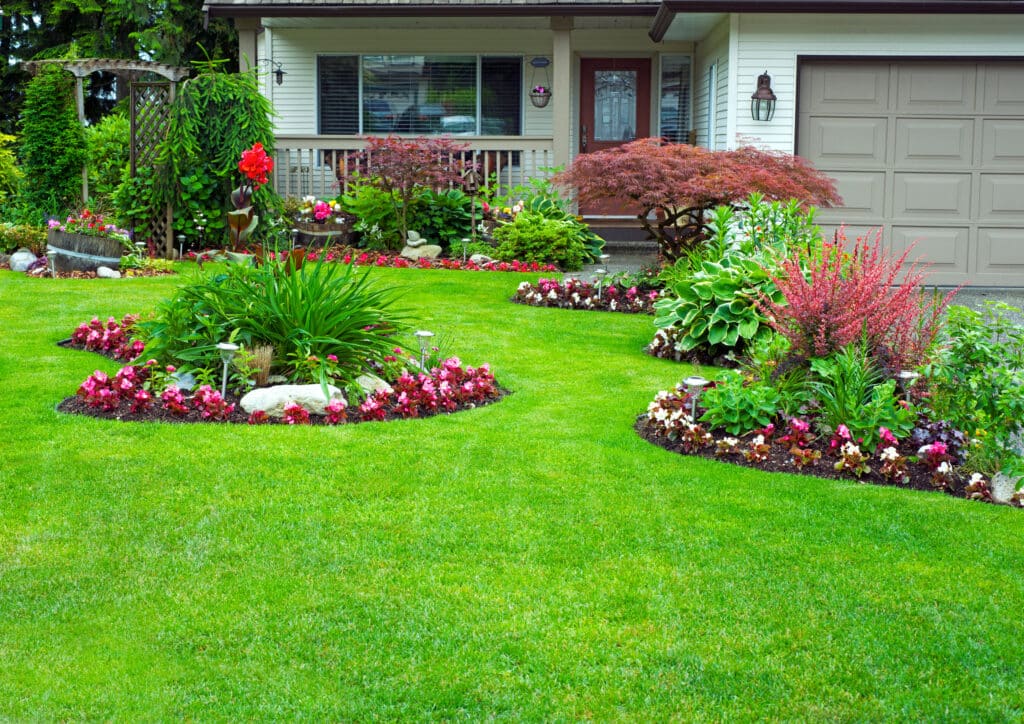
Soil is critical to the health of your septic system, and improper landscaping around your septic system could impact your living conditions. Ideally, your septic system was constructed by professionals with sediment and erosion in mind. However, it’s essential to maintain these controls to keep your plot stable and your septic system in top shape.
A few plants surrounding your septic system can add some visual appeal to your landscape, and placing plants close together and in proximity to the septic system helps prevent damaging erosion.
Plants combat soil erosion because their root systems cling to the soil and keep it clumped together. The northeast is no stranger to rainfall, and the right plants will make it harder for heavy rainfall to wash soil away. Plants also reduce erosion around your septic tank because they can stop strong winds that could otherwise blow topsoil away.
Don’t: Plant a Vegetable Garden Near the Tank
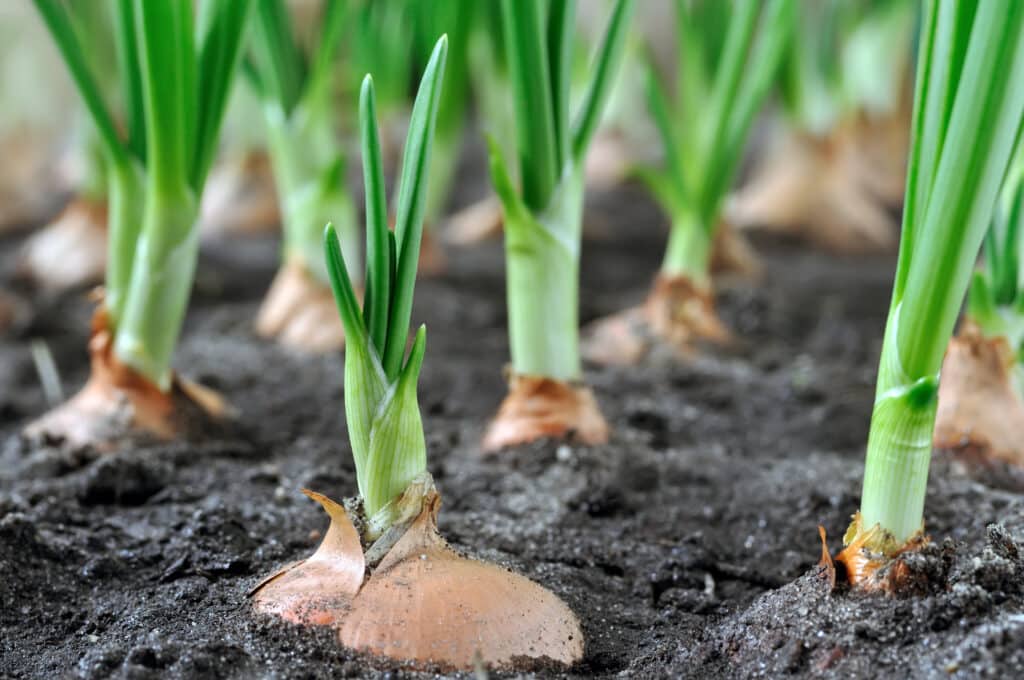
When people think of adding plants to their yard, their minds often jump to a vegetable or fruit garden. After all, what’s better than a landscape design that isn’t just visually appealing but practical for your daily life?
However, one of the most significant errors you can make when designing around your septic system is planting a vegetable garden near your tank. Vegetables and nutrient-absorbing plants can absorb harmful bacteria if they are too close to your septic tank. By planting a vegetable garden near your tank, you put yourself at risk of severe contamination.
Do: Select Drought-Tolerant Plants with Shallow Root Systems
Plants with a shallow root system, like perennials, flowers, or grasses will help to ensure those roots don’t do any damage to your underground wastewater systems.
Individuals residing in the northeast United States, such as Long Island, should consider some plants native to New York recommended by the Department of Environmental Conservation (DEC). Planting native plants is a great way to help restore some of our natural environment in your own yard.
If you’re landscaping in the northeast, you won’t have to worry about drought too frequently—however, you will have to consider excessive watering can compact the soil around your septic system. Compact soil can create problems with your drainfield by not stopping water from being absorbed into your soil at the rate necessary to keep up with the size of your septic tank.
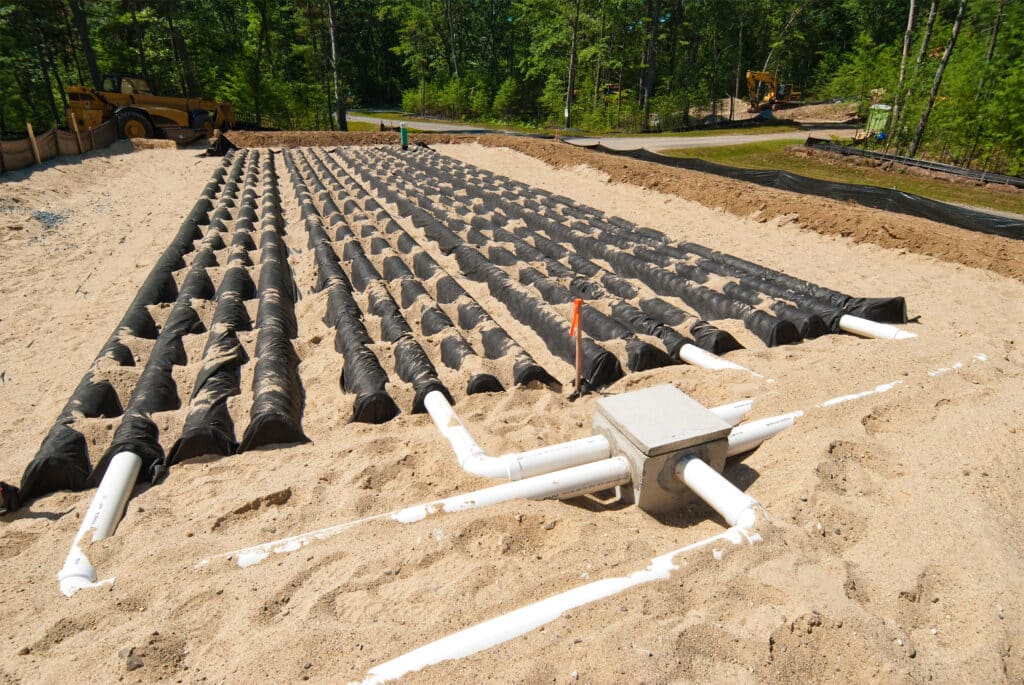
Choose water-efficient plants to eliminate the need for extra water around your system or plants that can survive primarily on rainfall. Septic system landscaping should prioritize native, drought-tolerant plants and grasses that don’t need water beyond typical rainfall.
Don’t: Install Ponds Near Your Tank
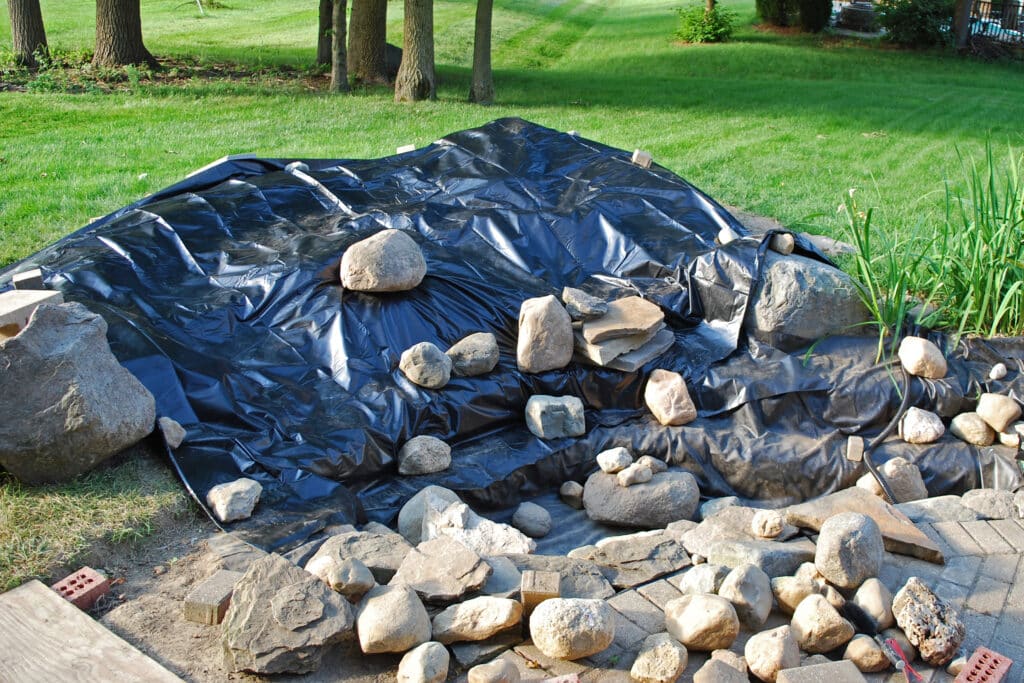
Installing plastic sheeting, ponds, or high-maintenance plants near your septic tank is a disaster waiting to happen. While a small pond might look great in theory, adding this feature will prevent proper drainage from your tank to the leach field. Keep ponds, plastic sheets, and water sources away from the septic system and reserve area.
In general, anything the requires digging more than a few inches into your soil is not a good idea near your septic tank.
Do: Direct Drainage Away From the System
Ensure that your landscaping design doesn’t interfere with your septic system’s drainage. Whatever you add to your yard and the area surrounding your septic tank, check that drainage is directed away from the system at all times. Septic systems require a functioning perimeter drain to direct water away from the area.
It’s crucial to direct surface water away from your septic tank because any excess water added to the area could harm and overload your septic system, causing it to back up and leading to eroded soil, harmful greases, and solids in your leach field.
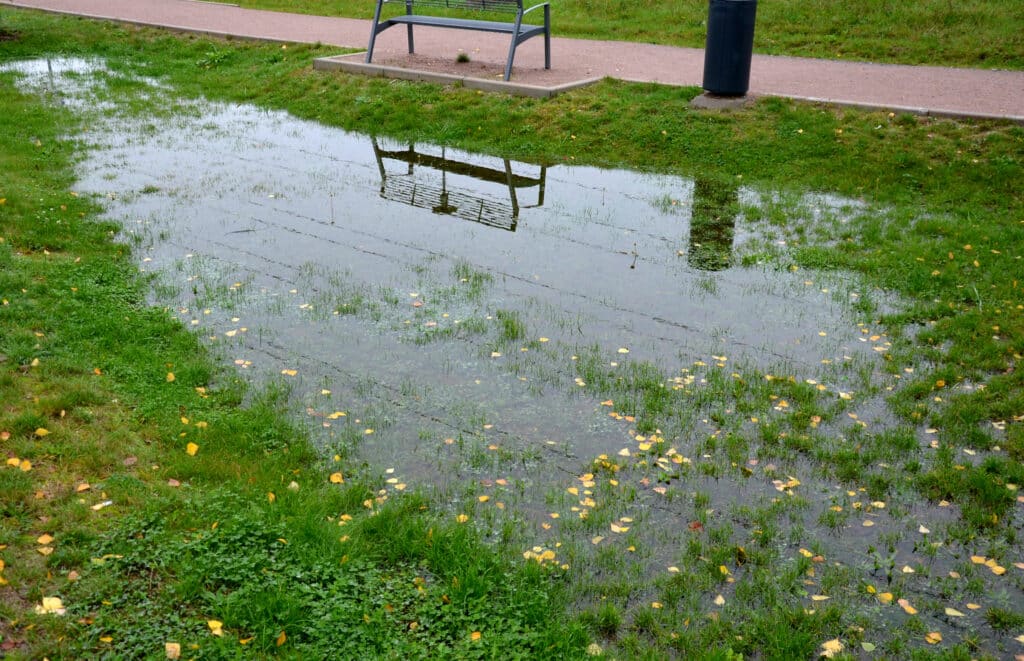
Remember that your leach field only functions properly if the surrounding soil is capable of absorbing the wastewater passing through it. If the soil is oversaturated, the water in your leach field has nowhere to go and can cause your entire system to fail it’s way back into your home!
Directing your drainage away from the leach field can prevent massive damage to your septic tank and surrounding areas.
Don’t: Plant Trees or Shrubs On or Near the System
While you can have trees in some areas of your yard, ensure you aren’t planting them on or near your septic system. It would be best to plant trees at least 20 feet away from your system or 50 feet for trees that regularly search for additional water sources.
Roots from trees planted too close to your septic system can clog your drain field and cause significant damage, especially if the roots seek out excess water. Intruding tree roots will lead to blockages and breakages in your septic pipes, manifesting into backups and overflows into your home or the streets.
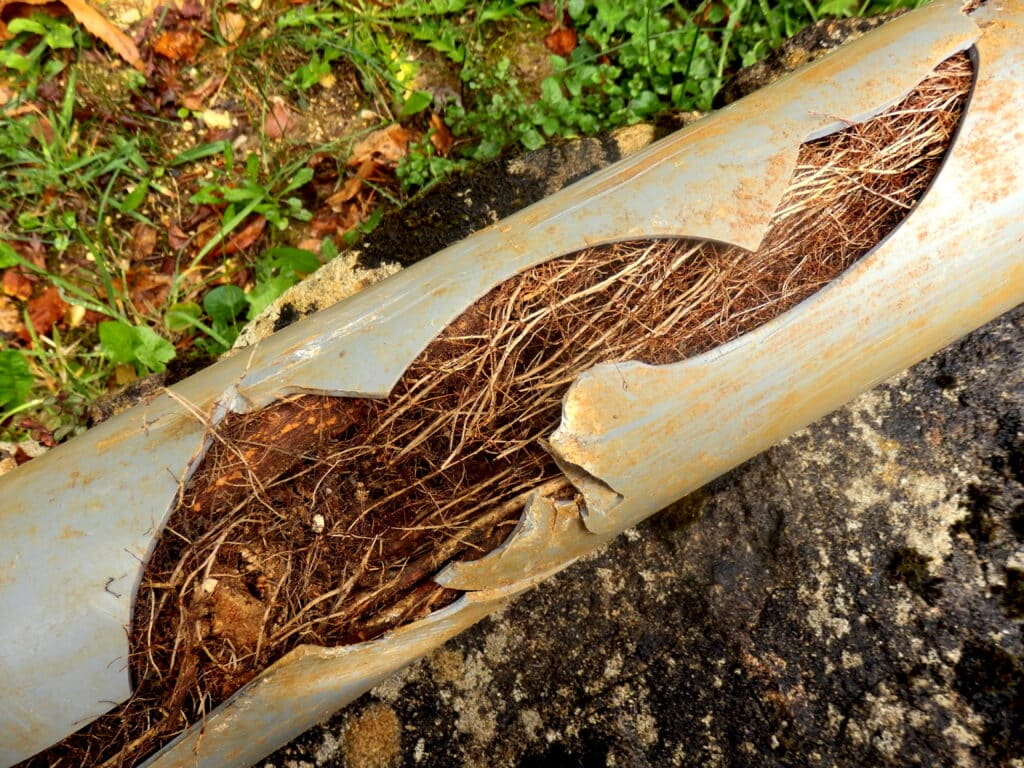
Tree roots invade septic lines because the pipes in your septic tank have everything a tree needs to grow: Water, nutrients, and oxygen. Consider sticking to shallow-rooted shrubs native to Long Island, such as the New Jersey tea plant, or shallow perennial grasses like the little bluestem. Some other plants native to Long Island and northeast states include lady fern, black-eyed Susan, and coneflower.
Native vegetation is a wise choice if you aren’t sure what plants you want surrounding your septic system. Like shallow-rooted grass, native vegetation will help absorb excess moisture to prevent oversaturation around your septic tank.
Do: Check for Animal Activity
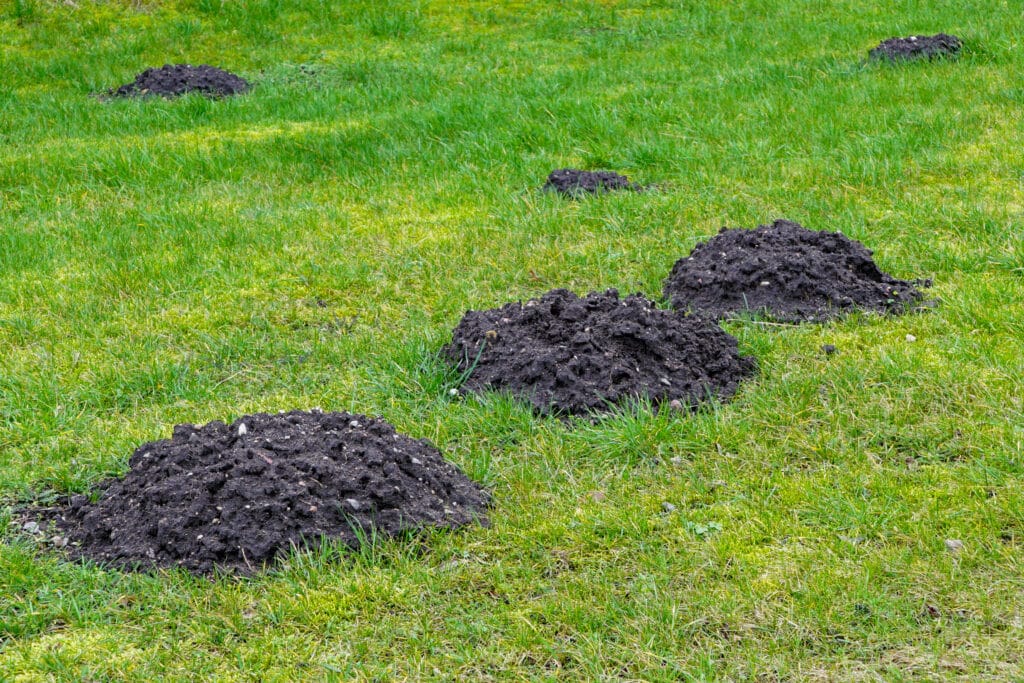
Before creating a new landscape design around your septic system, check for any signs of animal activity. For instance, you might notice an animal mound near the tank or signs of animal disturbances. Before making massive changes to your landscape, identify and control animal activity.
Any mounds caused by burrowing animals like moles, gophers, or groundhogs in your septic system can cause damage to the system because they interrupt the seepage of surrounding wastewater into your soil, creating contaminated, unsanitary conditions.
Though most moles will not build tunnels deep enough to reach your leach lines, this is always possible. If you notice a heavy presence of moles, gophers, or groundhogs in your yard, double-check that there is no interference with your septic system.
Many of these animals also feed on root systems so this is a good tip for all of your landscaping, not just around your cesspool or septic tank!
Don’t: Create Walkways Over the Tank
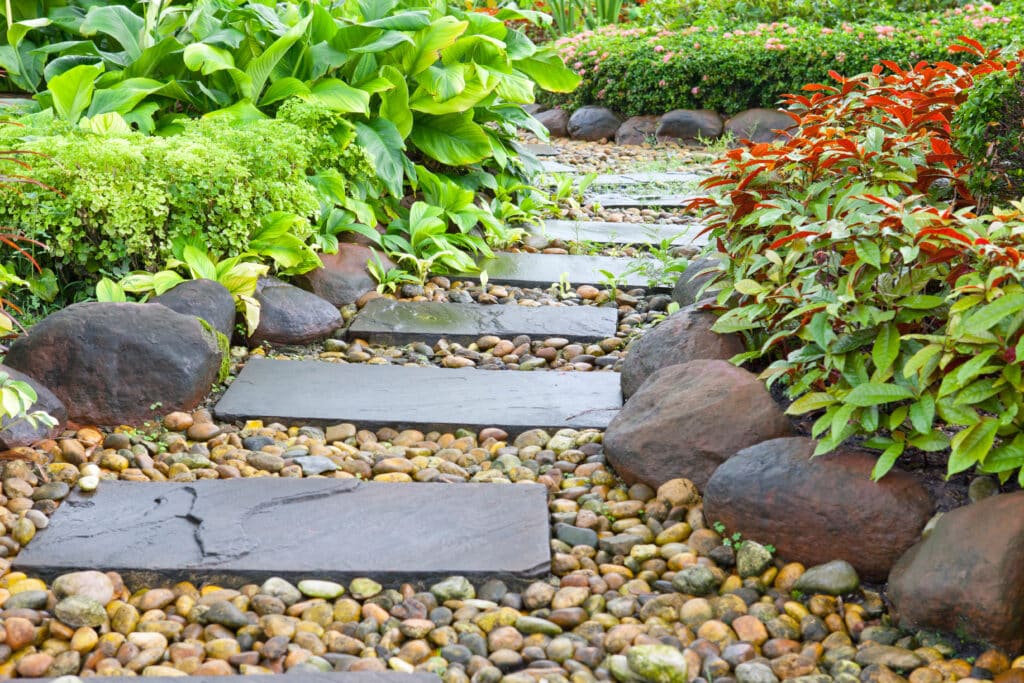
Avoid creating walkways or high foot traffic areas above your septic tank when attempting to hide your system.
If you have areas with high foot traffic on your septic tank, you might face significant issues as the soil continues to compress and compact over time with constant foot traffic.
Do: Mark Your Access Hatch and Maintain Access
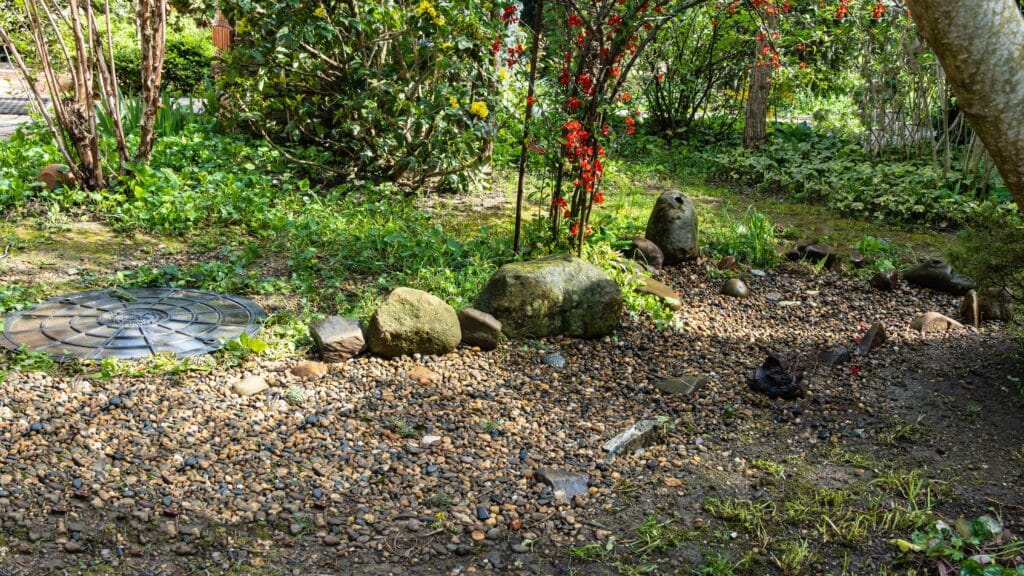
If you’re altering your landscape to hide your septic system, ensure that you (and anyone else that will need to!) can identify your access hatch quickly. You will benefit from marking your access hatch with a specific potted plant, lawn ornament, or riser cover. Marking your access hatch and ensuring a clear path to get to it will save you significant time (or money) when you or the cesspool company need access to the hatch.
Advanced septic systems require specific landscaping practices because they must be pumped annually. Without proper access to your hatch, pumping your septic system is a pain and can cause various problems to your landscape.
Don’t: Refill the Ground Surface
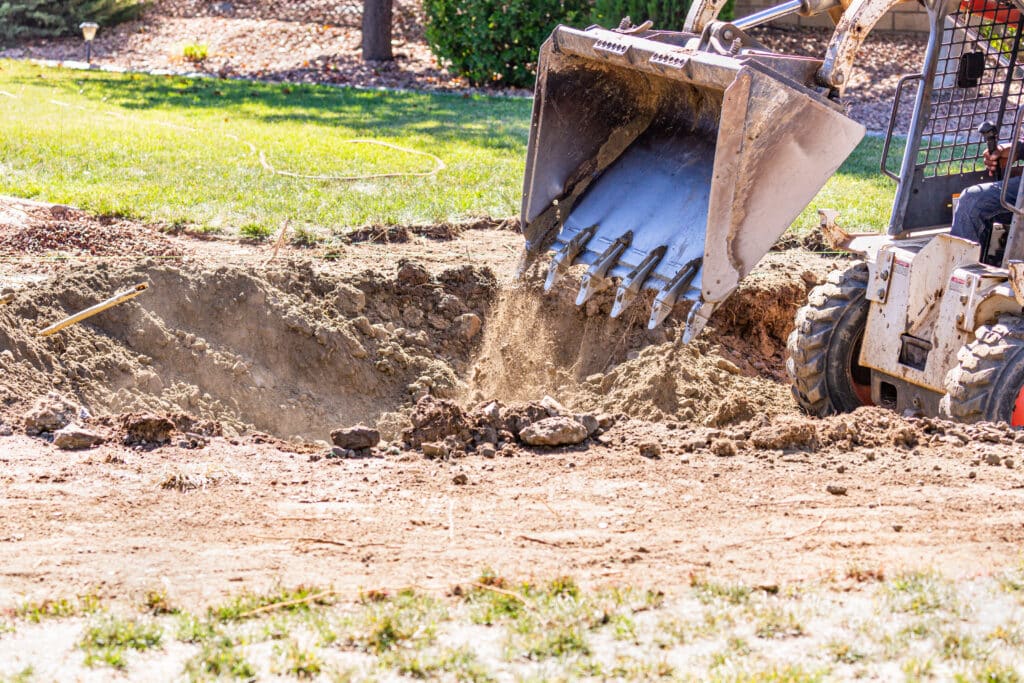
Avoid reshaping or refilling the ground surface over your drain field and reserve. While you can safely add small amounts of topsoil to the area, don’t go beyond a couple of inches, as doing so could cause damage to your septic system.
While you can typically add a bit extra topsoil to do things like level your lawn, if your septic tank is newly installed, any additional soil added to the top of your drain field can cause damage.
Drain fields are designed with an appropriate amount of gravel and soil to ensure the system functions properly. Adding too much topsoil will interrupt the natural evaporation process of excess water from your tank and drain field.
The Environmental Protection Agency (EPA) advises against reshaping or filling your ground surface over your drain field and reserve area.
Do: Consider Future Growth
Your landscaping design won’t only impact your septic system right now–it will have significant implications for your septic system’s future and tank access. Remember that unless you’re only planting mature shrubs, flowers, or plants, they are going to grow.
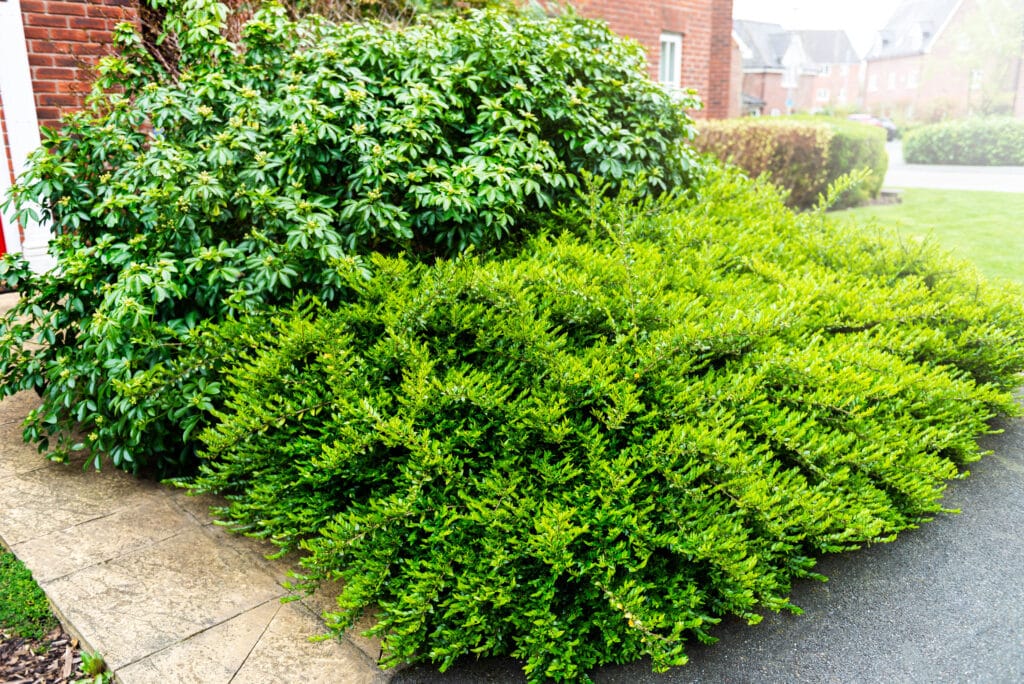
Many homeowners and DIY landscapers don’t plan well enough for the future growth of their landscapes. Be sure to space your plants far enough apart to account for how big they will be when they reach full size, and be especially careful that they will not impede access when they reach that size.
Don’t: Forget to Properly Plan for Any Fencing and Gates
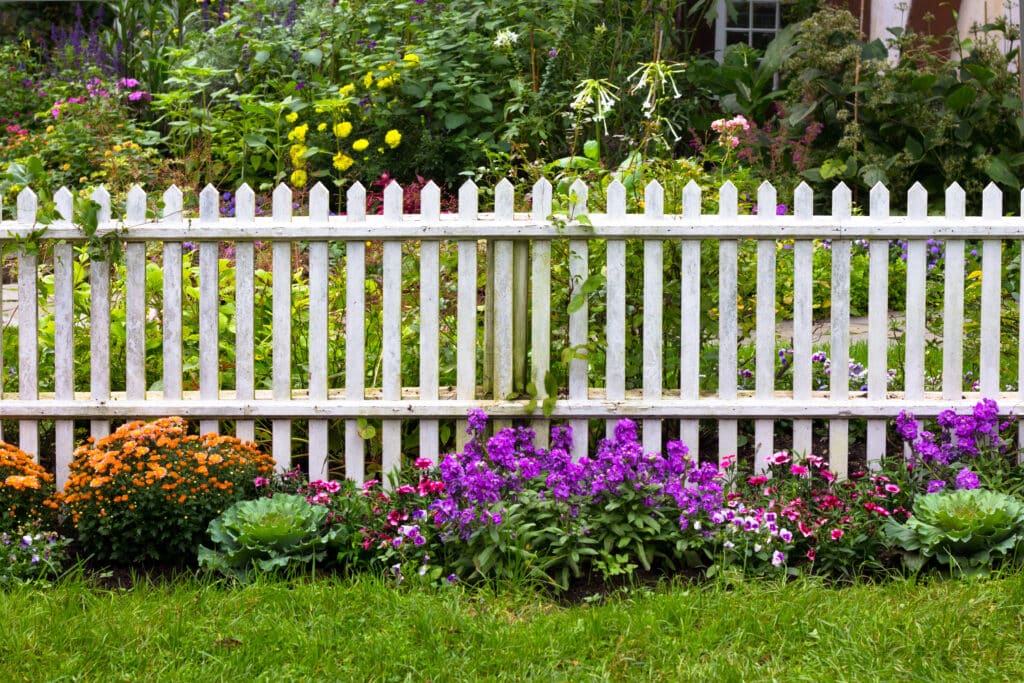
While we recommend against installing fencing on, around, or near your septic system, if you do decide to add a fence, there are a few important items to remember.
First, as we’ve already discussed, any digging projects (such as those for fence posts) around your septic system can cause damage or have unintended consequences.
But it’s also important to remember the issue with access again. Remember that no matter what type of septic or cesspool system you have, eventually someone is going to need to pump it out.
Septic and cesspool pumpers will ideally have no more than 50 feet of distance between the truck and the tank, so be careful not to create obstacles that increase the distance a hose will need to travel to pump out your cesspool.
Do: Use Non-Woody Ground Covers
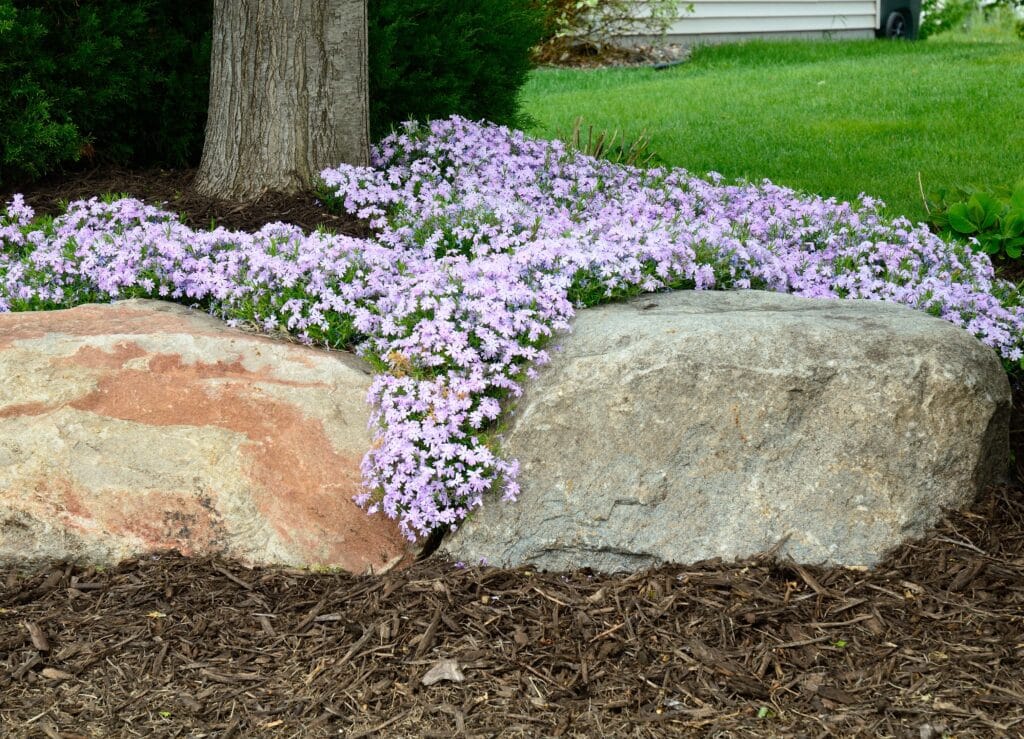
When selecting ground cover plants, ensure that you only consider non-woody ground cover options. Ground cover plants are excellent at offering extra topsoil protection to prevent damaging erosion around your septic tank. Non-woody ground covers have shallow roots that protect your septic tank without interfering with the surrounding landscape.
Don’t: Overwater Your Lawn
When you first plant around your septic tank, you might want to speed up the process by watering your plants frequently. Though you might think that watering your plants will help your vegetation grow faster, overwatering compacts and saturates the soil around your septic tank and over your leach field. Compacted and/or oversaturated soil can cause your septic system to back-up due as outlined above.
Do: Consider Drip Irrigation
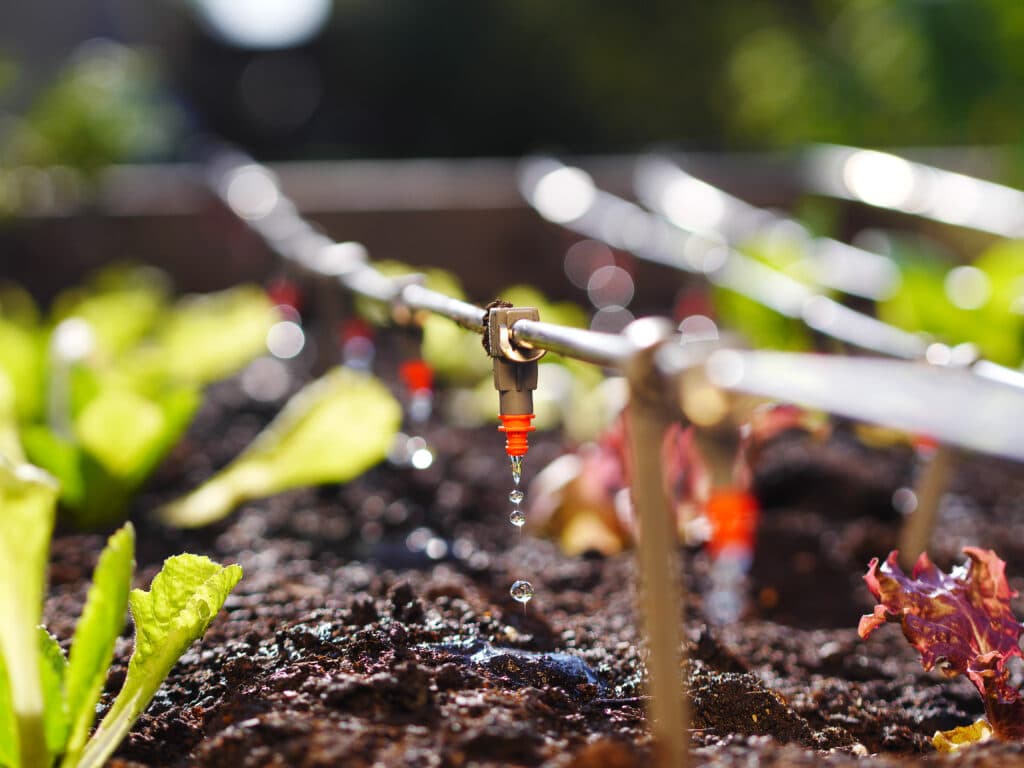
Consider using drip irrigation instead of your typical hose or inground sprinkler system. These systems have the potential to overwater and oversaturate your the ground around your leach field, especially for the overzealous homeowner that just planted a bunch of new plants and wants them to thrive!
A drip irrigation system is perfect for watering the plants around your septic system because it distributes water slowly and in a controlled fashion directly to the plant and it’s root system while leaving the rest of the soil around your septic system alone.
Don’t: Place Heavy Objects on Top of Your Septic System
Placing heavy objects and decorations over your septic tank can cause numerous mishaps that are best avoided.
Avoid gravel or stone walkways over your drain field that can cause problematic compaction and compression of the surrounding soil, and prevent evaporation.
Large structures like decks, sheds, outdoor furniture, or barns on or around your septic system are also a big no-no (in addition to most likely being code violations in your area).
The same rules apply to architectural features like fireplaces or statues, along with decorations like rocks to conceal your tank and contribute to your landscape’s overall appearance and aesthetic.
Lightweight solutions like decorative wine barrels possible alternatives to decorating the landscape around your septic system. You can cut the barrel in half and make a stunning decoration by filling it with flowers and decorative plants. Just remember any planters placed in this area can also become heavy very quickly if they’re not appropriately sized.
Do: Consider Painting or Camouflaging Your Lid
If you can’t find a creative way to conceal your septic tank lid, another great option is to simply paint your it!
Painting your lid or creating an elegant mosaic lid cover will help your septic lid blend in with its surroundings. While it won’t conceal the lid entirely, a painted septic tank lid can either camouflage it enough to make it a non-issue, or make it stand out and add a unique, artistic element to your yard.
You can also search Amazon for creative products that can help conceal your septic tank lid like artificial rocks or green septic riser covers.
Do: Understand What System You Have
How you design your new landscape will be heavily dependent on what type of wastewater disposal system you have. Traditional septic systems, cesspools, and new, nitrogen-reducing (I/A OWTS) systems all have different features that you’ll need to account for.
Cesspools, for example, don’t have leach fields but they do require more frequent pumping.
Traditional septic systems are typically fairly low profile with just a ground-level access cover to worry about.
An advanced, nitrogen-reducing Innovative / Alternative Onsite Wastewater Treatment System (I/A OWTS) – or IA/OWTS differs not only in function from a traditional septic system, but also in form.
Unlike traditional septic systems, a nitrogen-reducing system will need to be pumped annually and will have multiple access hatches for you to be concerned about.
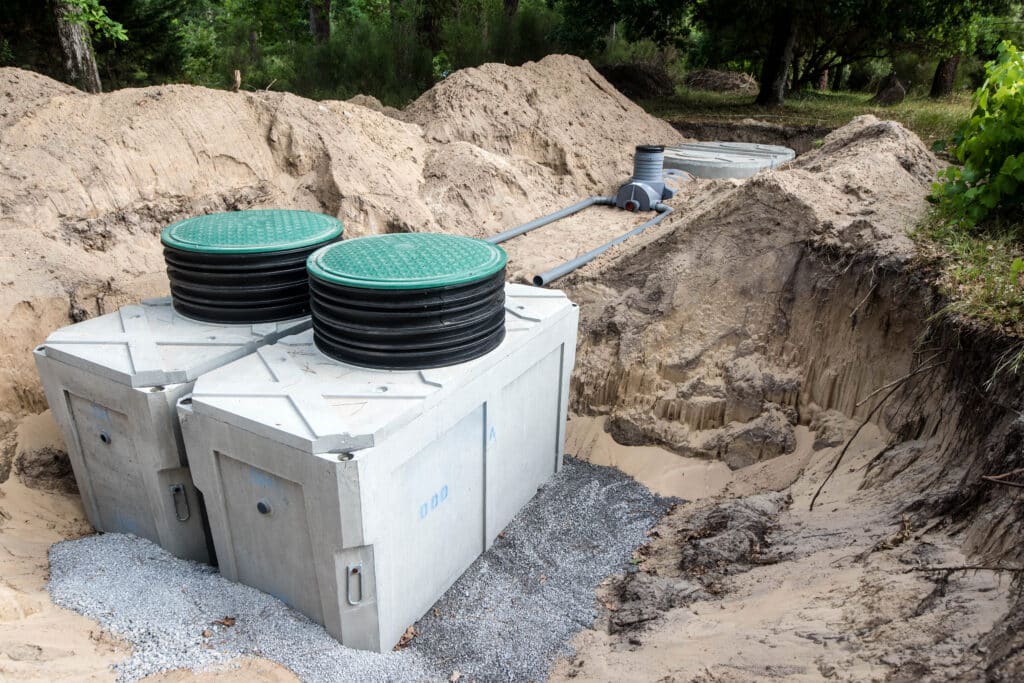
Nitrogen-reducing, advanced septic systems often stick out above the ground instead of sitting flush with the ground surface, as you would expect with most traditional septic systems. It’s not uncommon for advanced systems to have large, visible access panels to ensure the necessary access required to maintain these systems.
Address Your Septic Issues With Bridgewater Environmental
Long Island residents looking for advanced septic solutions can turn to Bridgewater Environmental to solve any issues they face with commercial and residential waste and septic systems. To design a new landscape surrounding the septic system that makes you happy with your yard, contact the experts at Bridgewater Environmental today to get started.

